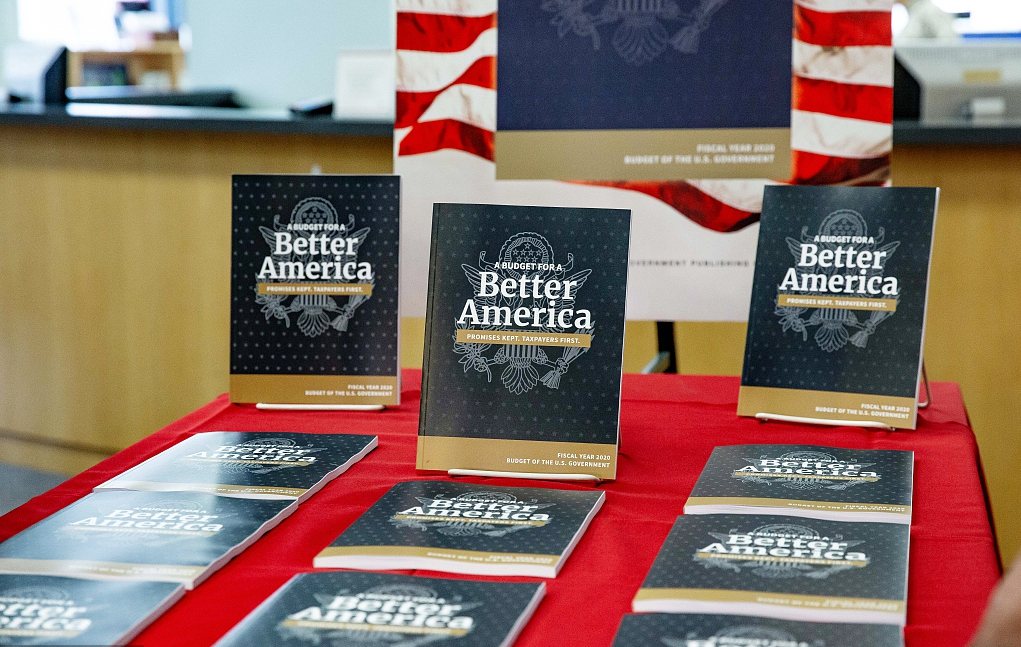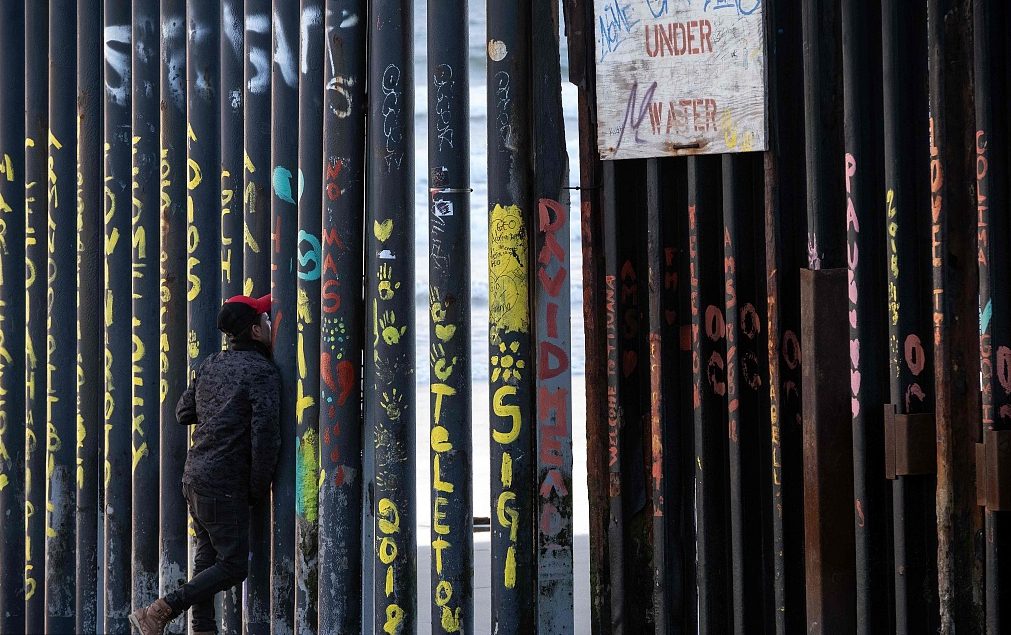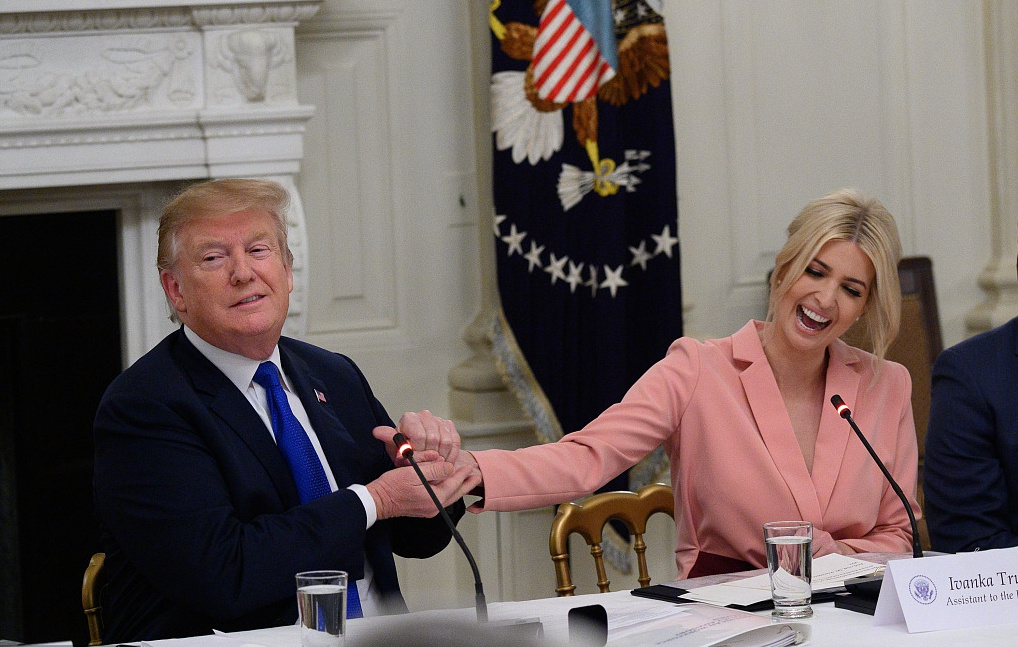U.S. President Donald Trump filed a record budget request that includes a one billion U.S. dollar childcare fund, championed by his daughter and adviser, Ivanka Trump, BBC reported on Monday.
Affordable childcare is set to become a campaign issue next year as Democrats seek to thwart Trump's bid for re-election, BBC added.
Childcare around the world
In the UK, low-income families can be covered for up to 85% of childcare costs, as well as parts of Germany and Finland offer free all-day care for every child up to the age of six.

Copies of U.S. President Donald Trump's fiscal year 2020 budget request sit display at the U.S. Government Publishing Office (GPO) library in Washington, D.C., March 11, 2019. /VCG Photo
Copies of U.S. President Donald Trump's fiscal year 2020 budget request sit display at the U.S. Government Publishing Office (GPO) library in Washington, D.C., March 11, 2019. /VCG Photo
In Denmark, childcare costs are capped at a certain percentage of a family's income, according to BBC.
Ivanka's plan included a proposal for six weeks of parental leave paid out of deductions from the mother or father's future pension, but that plan has stalled in Congress, said BBC.
What else is in the budget request?
The president also called on Monday for spending more U.S. taxpayer money on the military and a U.S.-Mexico border wall.
Like past presidential budget proposals, Trump's plan was highly unlikely to become law. It was immediately panned by Democrats, who control the House of Representatives and blocked Trump's push for border wall funding in a standoff that led last year to a five-week partial federal government shutdown.

A man looks through the U.S.-Mexico border fence in Playas de Tijuana, Baja California State, Mexico, March 8, 2019. /VCG Photo
A man looks through the U.S.-Mexico border fence in Playas de Tijuana, Baja California State, Mexico, March 8, 2019. /VCG Photo
The 4.7 trillion U.S. dollars plan asks for 8.6 billion U.S. dollars to build a wall on the border with Mexico - more than six times what Congress gave Trump for border projects in each of the past two fiscal years, and six percent more than he has corralled by invoking emergency powers this year after he failed to get the money he wanted.
Like last year's 4.4 trillion U.S. dollars Trump budget, which was dead on arrival on Capitol Hill, the 2020 version relies on rosy economic projections to achieve projected balance in the future.
"We view the president's 2020 budget proposal as a political priority-setting document. ... Congressional dynamics will mostly restrain requested domestic spending cuts and major changes to authorization language," said Ed Mills, a policy analyst at financial firm Raymond James in a research note.
Pentagon boosted
A major part of Trump's budget is his proposed four percent boost in defense spending to 750 billion U.S. dollars. It relies on using the emergency Overseas Contingency Operations (OCO) account - derided by conservatives as a slush fund - to skirt spending caps set out in a 2011 fiscal restraint law.

U.S. President Donald Trump addresses members of the military during a refueling stop at Elmendorf Air Force Base in Anchorage, Alaska, U.S., February 28, 2019. /VCG Photo
U.S. President Donald Trump addresses members of the military during a refueling stop at Elmendorf Air Force Base in Anchorage, Alaska, U.S., February 28, 2019. /VCG Photo
Non-defense spending was held below those caps, thanks to steep proposed funding cut to the State Department (23 percent) and Environmental Protection Agency (31 percent), among others.
A senior administration official told reporters the budget would cut U.S. aid to foreign countries by 13 billion U.S. dollars.
It would also cut federal subsidies to farmers, add a user fee on e-cigarettes and end a tax credit for electric car purchases.
Tax cuts have been a priority for the Republican White House and Congress in the past two years, rather than deficit reduction. The deficit ran to 900 billion U.S. dollars in 2019 and the national debt has ballooned to 22 trillion U.S. dollars.

U.S. President Donald Trump and Ivanka Trump participate in an American Workforce Policy Advisory Board Meeting at the White House, March 6, 2019. /VCG Photo
U.S. President Donald Trump and Ivanka Trump participate in an American Workforce Policy Advisory Board Meeting at the White House, March 6, 2019. /VCG Photo
The Committee for a Responsible Budget said Trump's budget would add 10.5 trillion U.S. dollars to the debt over a decade, and criticized the White House for what it called a "fantasy assumption" of three percent economic growth over that timeframe.
Unless the White House and Congress reach a spending deal, automatic spending caps from the 2011 law will kick in on October 1, adding another level of urgency to the fall deadlines.
House Budget Committee Chairman John Yarmuth said House Democrats would put out their own budget proposal around the first week of April and that he hoped for a deal with the Senate.
"The ingredients ... are there to make a reasonable deal. And the White House is the wild card."
Source(s): Reuters






